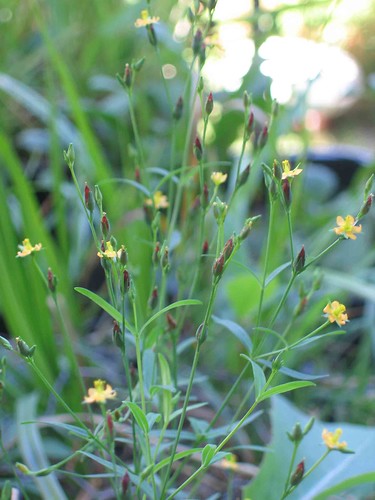HGG: Canada St. Johnswort

In today's installment of "Home Grown Greenery" we take a closer look at Hypericum canadense (Canada St. Johnswort). This native species is a member of the Clusiaceae or Mangosteen family. As you may have guessed, this family has its center of diversity in the tropics, with a few genera found in the more temperate climes. In fact, trees & shrubs are the more common plants found in this family, which makes the herbaceous H. canadense all the more intriguing.
Canada St. Johnswort may be an annual or perennial, but is always diminuitive, growing only to 20 inches tall. As with other Hypericum species, its leaves are opposite from each other, & alternate at 12/6 o'clock & 3/9 o'clock. Thus as one looks down the stem from above, they notice a cross pattern. This is the derivation of "St. John" (wort is the Old English word for plant).
From July through September, tiny, 5-petaled, yellow flowers appear on the tips of every stem. If pollinated, fruits develop - dark red conical capsules containing many small seeds.
The best place to find Canada St. Johnswort is in open, sunny, poorly drained areas such as marshes. This particular plant was found in southern Staten Island in an area of sandy glacial outwash with ribbons of clay soils. This plant is rare in NYC, as are its brethren - there are 5 other Hypericum species in the five boroughs, four are native, all are uncommon. One of the biggest threats to its future is the encroachment of trees & shrubs - shaded out by woody species as a result of succession. This is, of course, with the understanding that the biggest threats to our flora are always lack of conservation leadership. NYC natural areas have been destroyed through development & degraded by exotic invasives.





No comments:
Post a Comment